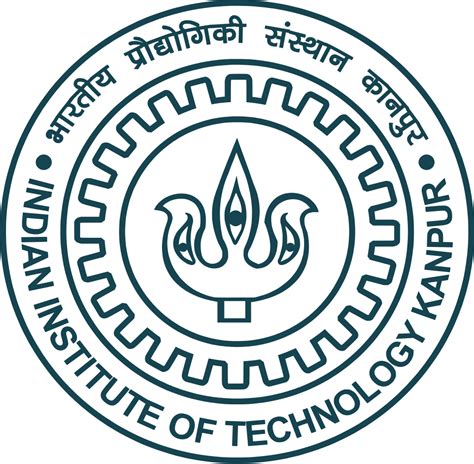
Education / Work History
- Ph.D. Scholar, IIT Kanpur (2016-present)
- M.Sc., CSJM University, Kanpur (2013-2015)
- B.Sc., Kumaun University, Nainital (2013)
Research Topic / Interest
Contact me to know my current interests.
Publications
These include only those published in our lab.
-
Sensing Non-Ideal Microheterogeneity in Binary Mixtures of Dimethyl Sulfoxide and Water.
S. N. Bandyopadhyay, A. Singh, K. K. Singh, and D. Goswami, Journal of Optics 24(5), 054001 (2022)
[Abstract]
[PDF]
[BibTeX]
Abstract: We present a microscopic study of water–dimethyl sulfoxide (DMSO) binary mixtures using optical tweezers and thermal lens techniques. Binary mixtures of DMSO with water show anomalous behavior due to the specific hydrogen bonding ability of DMSO. We use a tightly focused femtosecond laser at a low average power to optically trap microspheres with diameters of 1 micron for use as probes. The binary mixture exhibits various viscosities, depending on its composition ratio, and hence different trapped particle characteristic frequencies (corner frequencies) due to Brownian motion. The power spectrum density method is used to obtain the corner frequency from forward-scattered data. Thus, using low-power optical tweezer experiments, we find that the maximum viscosity occurs at a DMSO mole fraction of 0.276. At higher powers, the propensity for trapping is highly diminished. It may be surprising to note that these viscosity values obtained from the corner frequencies do not exactly match those published in the literature. However, this deviation can be attributed to the thermal behavior of the binary mixture, which affects the Brownian motion and hence the obtained viscosity values. Studies at the microscopic level can thus provide a newer perspective on these already important binary mixtures. Intensity-dependent measurements further confirm the contribution of thermal effects in this study.
BibTeX: @article{bandyopadhyaySensingNonidealMicroheterogeneity2022, title = {Sensing Non-Ideal Microheterogeneity in Binary Mixtures of Dimethyl Sulfoxide and Water}, author = {Bandyopadhyay, Soumendra Nath and Singh, Ajitesh and Singh, Krishna Kant and Goswami, Debabrata}, date = {2022-05-01}, journaltitle = {Journal of Optics}, shortjournal = {J. Opt.}, volume = {24}, number = {5}, pages = {054001}, issn = {2040-8978, 2040-8986}, doi = {10.1088/2040-8986/ac50ff}, url = {https://iopscience.iop.org/article/10.1088/2040-8986/ac50ff}, urldate = {2022-12-31} } -
Advantage of Femtosecond Optical Tweezers.
A. Singh, D. Kumar, K. K. Singh, and D. Goswami, in Frontiers in Optics + Laser Science 2022 (FIO, LS) (2022), Paper JW5A.26 (Optica Publishing Group, 2022), p. JW5A.26
[Abstract]
[PDF]
[BibTeX]
Abstract: To highlight the advantage of femtosecond optical tweezers over conventional tweezers, we trapped 1µm diameter polystyrene beads suspended in water using a Ti:Sapphire laser.
BibTeX: @inproceedings{singhAdvantageFemtosecondOptical2022, title = {Advantage of {{Femtosecond Optical Tweezers}}}, booktitle = {Frontiers in {{Optics}} + {{Laser Science}} 2022 ({{FIO}}, {{LS}}) (2022), Paper {{JW5A}}.26}, author = {Singh, Ajitesh and Kumar, Deepak and Singh, Krishna Kant and Goswami, Debabrata}, date = {2022-10-17}, pages = {JW5A.26}, publisher = {{Optica Publishing Group}}, url = {https://opg.optica.org/abstract.cfm?uri=FiO-2022-JW5A.26}, urldate = {2022-12-31}, eventtitle = {Frontiers in {{Optics}}} } -
Study of Starch Using Bright Field and Polarized Light Microscopy.
K. K. Singh, Y. Yadav, D. Kumar, A. Singh, and D. Goswami, in 2019 Workshop on Recent Advances in Photonics (WRAP) (2019), pp. 1–2
[Abstract]
[BibTeX]
Abstract: Starch is a polymer derived from plants that have various applications. There are various types of starch available like potato, maize, tapioca, and wheat, etc. We have studied and successfully differentiated tapioca and maize starch using polarized light microscopy and bright field techniques with the help of Iodine staining. Starch granules are suspended in aqueous or non-aqueous media for polarized light and bright field microscopy. The botanical source of the starch is identified according to the shape and size of granules, granule surface marking, the position of hilum, iodine staining, and the presence of maltase crosses under polarized light.
BibTeX: @inproceedings{singhStudyStarchUsing2019, title = {Study of {{Starch Using Bright Field}} and {{Polarized Light Microscopy}}}, booktitle = {2019 {{Workshop}} on {{Recent Advances}} in {{Photonics}} ({{WRAP}})}, author = {Singh, Krishna Kant and Yadav, Yogendra and Kumar, Deepak and Singh, Ajitesh and Goswami, Debabrata}, date = {2019-12}, pages = {1--2}, issn = {null}, doi = {10.1109/WRAP47485.2019.9013741}, eventtitle = {2019 {{Workshop}} on {{Recent Advances}} in {{Photonics}} ({{WRAP}})} }
